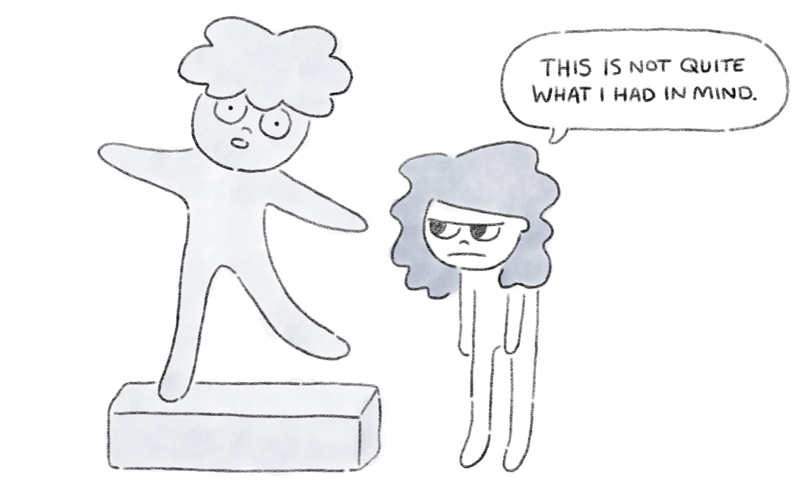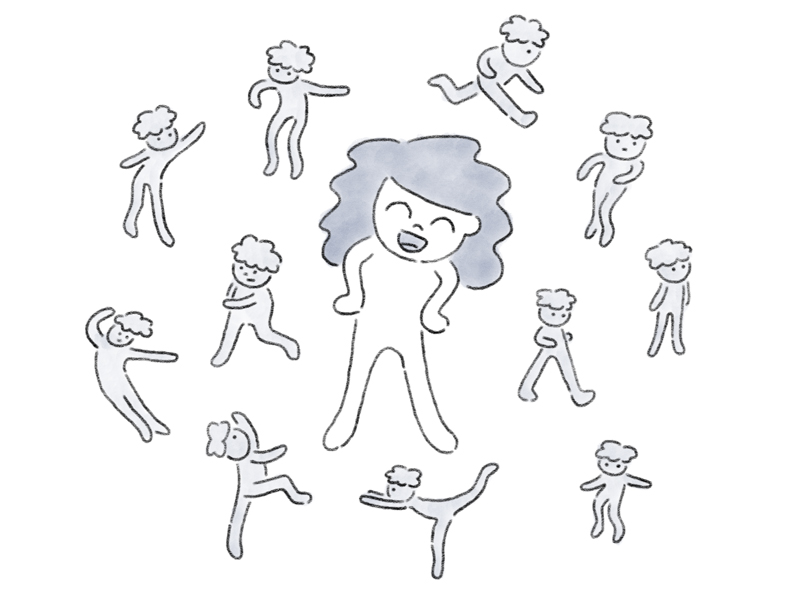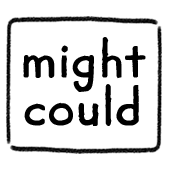There is no perfect art
Making art is always a push and pull of what’s in our heads and what we actually create. What we expected to make, and what we actually made. We often aim to achieve perfection with each piece. It would seem that striving for perfection would be the best way to improve. Aim for the moon and land in the stars, right?
I guess that partially makes sense, but what makes that mindset difficult is defining what the “moon” is in this situation. What makes a piece of art perfect?
If we’re looking at a painting, how do we determine if it’s perfect? There are art critics who can tell you their opinion about the artwork, and we as viewers can describe how it makes us feel, or what our opinion is. But that doesn’t give us a measurable standard for perfection.
We could try to force measurements onto the artwork. We could measure the golden ratio of the composition, how many colors used, how many brush strokes painted, how many hours it took to create it, how long it is, how heavy it is, how many different tools were used…
But does any of that tell us how perfect a piece of art is?
The truth is that there’s no way to measure perfection in art.
Because there is no perfect art.

Imperfection is more interesting anyway
Even when we can have perfection, we don’t really want it. No one wants to watch a perfect basketball player, who always makes every shot and always wins every game. We crave the upsets, the let downs, the unexpected, the surprises, the tension—what will happen? Which shot will be missed at the buzzer? What mistakes will be made? We want to see the strive for perfection, but we don’t actually want to see perfection.
And the same is true for art. If there could be a perfect piece of art, would we even like it? Humans love imperfection. An imperfect drawing feels more alive, it feels more real. A wiggly line might have more movement than a straight line. An illustration colored loosely might feel more emotive than if were colored in cleanly.

We humans aren’t perfect. We often think we should be, but we aren’t and never will be. We can relate to imperfection more than we can relate to perfection. We’ve never experienced perfection, but we have all experienced imperfection.
When you’re creating art, it’s best not to expect perfection. You’ll always make mistakes. You’ll draw a line that wobbles, your paint will bleed, you’ll rip your paper, and your art just won’t look right.
But all those mistakes make the artwork real. The mistakes show your hand. The mistakes show the human side. And if you pay attention, the mistakes will lead you lead down a path you wouldn’t have taken otherwise.

Your mistakes will lead you to more ideas
There’s a story I love about perfection from the book Art & Fear, by David Bayles and Ted Orland.
Basically, a ceramics teacher split his class into two groups to test a theory. He told the first group they would be graded based only on the quantity of work made, while the second group would be graded on their work’s quality. The first group would have everything they made simply weighed to determine their grade, while the second group had to create a single perfect piece to get an A.
When it came time to grade, a surprising thing happened. The highest quality work came from the group being graded for Quantity.
While the Quantity group was busy making piece after piece (learning from their mistakes and trying new things with each iteration), the Quality group just sat there thinking about what would make the best piece and in the end didn’t have much to show for their thoughts.
Imperfection and mistakes are not just common in art making, but are actually an important part in the artmaking process. The mistakes give you clues about what works and doesn’t, letting you experiment, learn, and keep moving.
Your art will never be perfect, and you’ll never be a perfect artist. But with every piece of art you make, you’ll be a better artist than you were before.
Don’t aim to make perfect art. Aim to make more mistakes.
“Go and make interesting mistakes, make amazing mistakes, make glorious and fantastic mistakes. Break rules. Leave the world more interesting for your being here. Make. Good. Art.” –Neil Gaiman, writer



